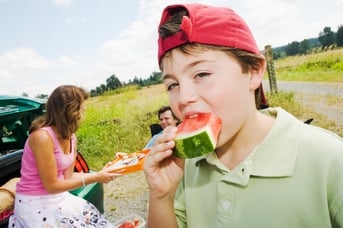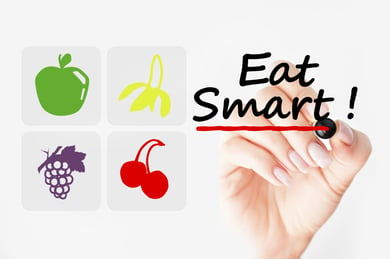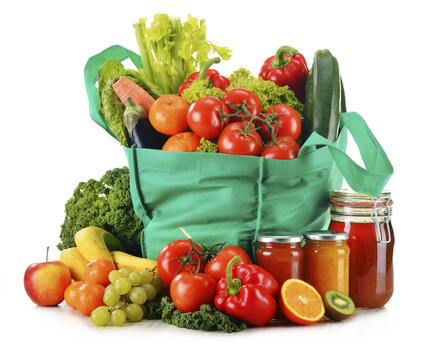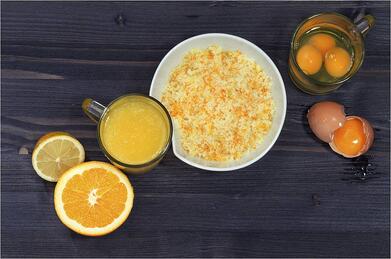 Whether you are traveling for business or for pleasure it typically means most meals are eaten out or on the go. This can be challenging to make the most balanced choices and keeping your eating on the right track. You want to try foods special to that region, you are busy and grabbing the first thing that sounds good, you don’t have access to a grocery store for more fresh foods can all be challenges while traveling.
Whether you are traveling for business or for pleasure it typically means most meals are eaten out or on the go. This can be challenging to make the most balanced choices and keeping your eating on the right track. You want to try foods special to that region, you are busy and grabbing the first thing that sounds good, you don’t have access to a grocery store for more fresh foods can all be challenges while traveling.
The following 10 healthy snack ideas can help to keep you satisfied between meals and allow you to make balanced decisions at lunch or dinner. These are snacks that you can bring from home that don’t require any refrigeration or utensils. These can be easily thrown in a purse, bag or suitcase and readily available for you to grab at snack time.
Trail mix – Grab a handful of your favorite lightly salted or unsalted nuts, a handful of dried fruit, and a handful of high fiber cereal and toss in sandwich baggies for a high fiber and shelf stable snack.
Fresh fruit – Bananas, apples, pears, grapes, and citrus fruits are great options to grab from home for a sweet and tasty snack. If you are concerned about the fruit bruising or spoiling during traveling, consider grabbing the squeezable fruit pouches. Just be sure to pick the ones with only fruit and vegetables listed in the ingredients.
Peanut butter sandwich – These aren’t just for kids! 2 slices of whole wheat bread can provide 8 grams of filling fiber and 2 Tbsp of peanut butter can provide 8 grams of protein. This delicious and portable snack is perfect for traveling away from home.
Hardboiled egg – This snack will provide you with all of the essential amino acids your body needs. They can go a few hours without being refrigerated, so try to eat them as a morning snack if possible. Or if you have access to a refrigerator, they will stay good in their shell for up to a week.
Jerky – This portable protein snack comes in many options such as beef, turkey, chicken, venison, and bison. They are typically low in saturated fat and calories. However, these can be loaded with sodium and not so good for you nitrates. Look for lower sodium varieties and jerky with very short ingredient lists.
Nutrition bar – These prepackaged bars can be confusing since there are so many options on the market. Check out my blog with tips and suggestions, but as a rule of thumb grab a bar with less than 15 grams of protein, more than 3 grams of fiber, 15 grams or less of sugar, and mainly heart healthy fats.
If you forget to grab snack when you leave home, here are some options that can be available for purchase.
McDonald’s fruit and yogurt parfait – This snack size treat has 150 calories and 4 grams of protein. Save 30 calories and 40 mg of sodium when you skip the granola topping.
Starbucks protein box (1/2 the box) – The full box is 380 calories which is more along the lines of a meal than a snack, but if you have someone to split with or a fridge for the leftovers, ½ the box is a great snack option. Apples, grapes, a hardboiled egg, multigrain muesli bread, cheddar cheese, and peanut butter are all included.
Wendy’s small chili – At only 170 calories and loaded with 15 grams of filling protein, the small chili is a great snack option. Beware of the toppings though…the cheese will double the fat content and add 60 calories to the cup.
Subway apple slices and cheese slice – For a perfect combination of fiber and protein, grab a bag of apple slices and 2 pieces of cheese for a snack around 100 calories total.
The most important tip is everything in moderation! Enjoy your travels, try something new, and get out there and explore the new city!
Download our whitepaper to receive tips for adding exercise to your worksite.


 Many people don’t know where to start when eating healthier. Here are eight tips to help you eating smarter. You don’t need to do them all, but by incorporating just a couple of changes each week, you will find yourself on a path to better health in no time!
Many people don’t know where to start when eating healthier. Here are eight tips to help you eating smarter. You don’t need to do them all, but by incorporating just a couple of changes each week, you will find yourself on a path to better health in no time! Have you ever wondered how some people seem to have energy throughout the day and manage to work out after they get off work? What’s their secret and how can you steal it?
Have you ever wondered how some people seem to have energy throughout the day and manage to work out after they get off work? What’s their secret and how can you steal it?
 Answer these questions:
Answer these questions: Vitamin D…almost all of the 600 IU that are recommended daily. The canned tuna and sardines are an inexpensive way to get in seafood, heart healthy omega 3’s and 150 IU of Vitamin D per serving. Another bonus is the long shelf life if you haven’t been to the grocery store to get fresh protein choices.
Vitamin D…almost all of the 600 IU that are recommended daily. The canned tuna and sardines are an inexpensive way to get in seafood, heart healthy omega 3’s and 150 IU of Vitamin D per serving. Another bonus is the long shelf life if you haven’t been to the grocery store to get fresh protein choices.
 Carbohydrate sounds like such a dirty word these days. It’s that word that makes everyone cringe or slightly panic, but why? There’s the myth that all carbohydrates are bad, giving people the distorted thought that cutting carbs will help you lose that extra weight you might be carrying. The truth is that not every single carbohydrate is bad. The category of carbohydrates is very broad, so I am going to break it down for you.
Carbohydrate sounds like such a dirty word these days. It’s that word that makes everyone cringe or slightly panic, but why? There’s the myth that all carbohydrates are bad, giving people the distorted thought that cutting carbs will help you lose that extra weight you might be carrying. The truth is that not every single carbohydrate is bad. The category of carbohydrates is very broad, so I am going to break it down for you. 